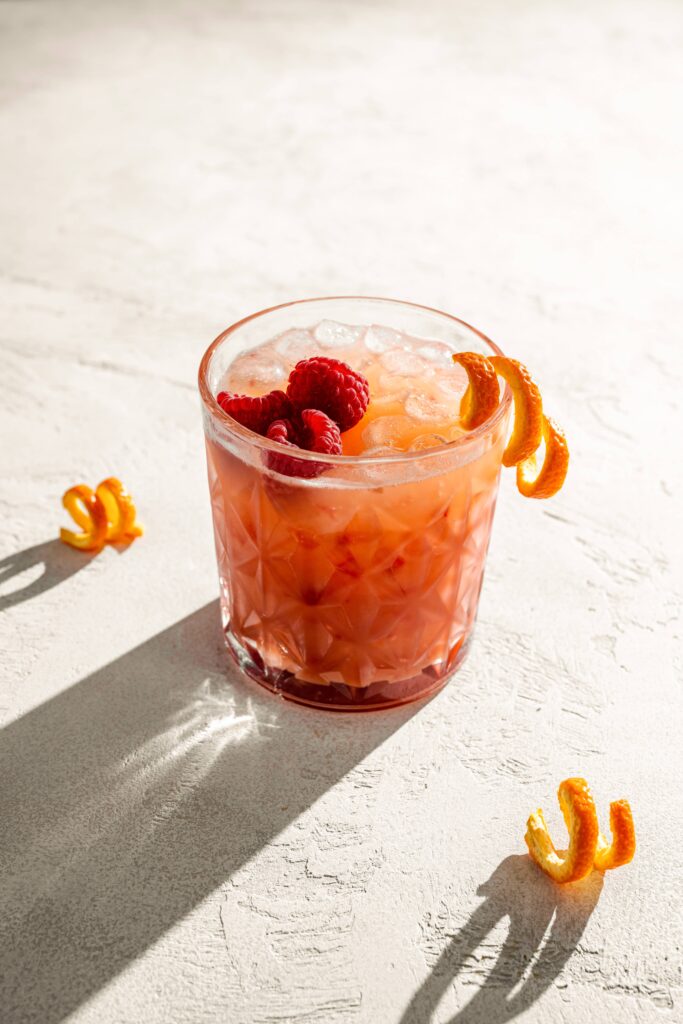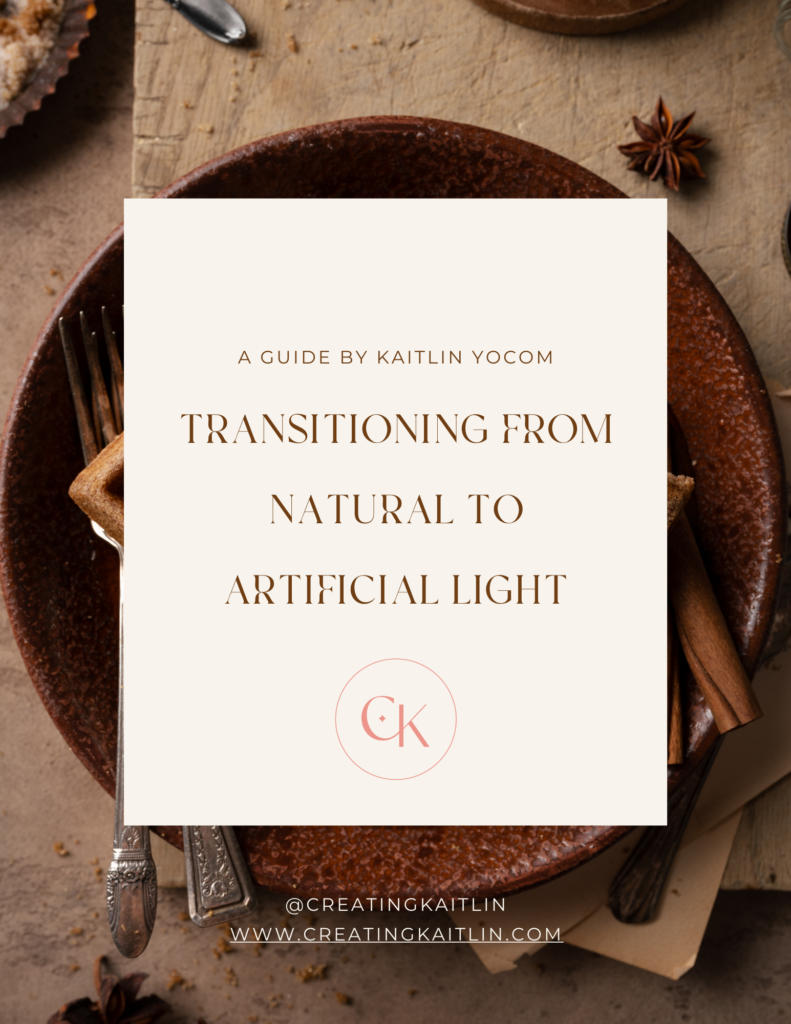
This post will be all about my artificial light equipment that I use for both photography and videography. After reading this post, you should have a better understanding of why I use all of these pieces and how they might also be beneficial for you and your photography!
artificial light for photography
I use a flash for photography. I find that a flash produces a really crisp, sharp image. Flash is also really great at capturing motion and action. Think of cream swirling into coffee or maple syrup being poured onto pancakes. Flash makes it so much easier to freeze motion clearly. These action shots pictured below were taken with a flash.
I have the Godox V8600II flash and I find that it’s great at getting the job done while still being affordable. I’ll definitely upgrade in the near future just because there are some instances where I need more power when using my 105 mm lens.



Flash is also awesome for shooting in uncontrolled environments. What does this mean? Say you’re shooting in the living room and there’s an overhead light on, the blinds are open, or the tv is on. That’s totally fine! The flash cancels out any ambient light that’s happening in your surroundings. This is so nice for me especially because I shoot close to the kitchen (where I’m always running back and forth). So I can leave my kitchen lights on while shooting, instead of remembering to turn them off every time I go back to shooting and risk having my shot ruined if I forget.
Flash is also pretty dang powerful. If I need to, I can typically have my flash on full power and never have to worry about touching the ISO. I love this because low ISO = low/no noise or graininess! But also note – a higher ISO is not necessarily a bad thing!! So if you need to use it, use it. 😊 Better to have a properly exposed image than one that’s way too dark.
modifiers for food photography
So I just talked about my flash, which can totally be used on its own if you’re trying to achieve super hard light. Most photographers whose style is hard light tend to still have some type of diffuser or modifier to help control their light even more. So let’s talk about them!
Modifiers are used to shape, manipulate, and soften your light source. You can really change the whole mood of your scene with the use of a modifier.
I currently have two different modifiers that help me achieve the look I’m going for. I have a rectangular soft box (Glow EZ Lock 31×47 with Bowens Mount) and an umbrella octagon soft box (Godox Portable 120cm/47.2″ Umbrella Octagon Soft Box).
I love my rectangular soft box because it mimics a window in shape and size, so it acts similar to natural light. I find myself using a rectangular soft box more for videography!
My umbrella soft box is my current favorite to use for photography because it creates a really nice, soft, and even light.
At times I even use my 5 in 1 Reflector/Diffuser to help diffuse my light.
Take a look below to see the differences between the three modifiers.
There are tons of different modifiers out there that are used for various purposes. Check out this video on YouTube talking about some popular ones for food photography!
artificial light for videography
When it comes to recording video, a flash won’t get the job done because it’s not constantly on. Flash fires once the shutter button is pressed, so we need a light that’s going to be on continuously. This is where the continuous lights come into play.
Continuous lights are a little bit different from a flash. Like I said earlier, a continuous light is always on, whereas a flash needs to be fired. Think of a continuous light like natural light, except for the fact that it remains the same/can be controlled (white balance, intensity, etc.).
Perhaps the most important point to remember is a continuous light doesn’t cancel out ambient light. It’s super important that you block all other light sources besides the continuous light. This includes any windows, overhead lights, tvs, string lights, etc. We only want the artificial light source on.
Here’s a link to my continuous light – Aputure C300d II. I opted for a pricier light because I knew video would be a vital part of my business. So I wanted to invest in a light that I knew would last me for a few years without feeling the need to upgrade. This light is awesome and extremely powerful.
Continuous light can also be used for photography. I do sometimes use continuous light after I’ve shot a video and need to take a few images. However, I will say there’s something about a flash that gives you such crisp and clear images. It can’t be beat. So for that reason I’ll always choose flash over continuous light for photography.
Take a look at these two photos below. The one on the left was taken with a flash. The one on the right was with the continuous light. Not a HUGE difference, but to the photographer’s eye there’s definitely an added crispness to the flash image.
artificial light for stop motion animation
I also use continuous light for stop motion. As long as all other light sources are blocked and turned off, I can take a sequence of shots and have them all come out the exact same.
Wondering why I wouldn’t use flash? Flash does work, but even though we are able to control the settings of our flash and remain consistent with our images, every time you press the shutter button and the flash goes off, the flash may fire off a slightly higher or lower level of power compared to the previous frame. This isn’t a big deal when you’re just taking photos and you want them all to be consistent.
However, it becomes very noticeable as soon as you put a string of photos together in a stop motion. The final stop motion will look glitchy, and you’ll be able to see the very minimal changes from the result of the flash firing at different powers. This can be fixed in post-production, but trust me, it takes forever and is a huge pain.
Take a look at this stop motion I created last year using a flash. Do you notice the little glitches throughout?
other pieces of equipment needed for artificial light
Unfortunately, buying a light and modifier doesn’t mean you’re all set and ready to go. There are several other bits you’ll need in order to set everything up successfully. Please note that everything I have linked works with my specific lights and camera (Nikon). Do your research before buying and make sure everything goes together!
Flash Attachments – Godox S-2 Speed Lite S-Type Bracket, Bowens Mount
Flash Trigger – Godox X2T-N TTL Wireless Trigger
Rechargeable Batteries (for trigger) – Eneloop AA Panasonic
Light Stand – Neewer Light Stand
Again, you may need more or less depending on your lights and camera. This is just the list of pieces I have and use for my specific set up!
If you want to dive deeper into transitioning from natural to artificial light, you can check out my eBook where I teach you how to take food photos full of depth & dimension using artificial light.
I hope this was helpful! As always, if you have any questions feel free to comment below or reach out via DM. 🙂
xx

COMMENTS